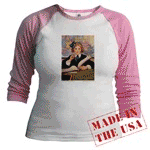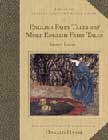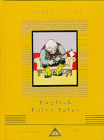| Introduction | Annotated Tales | eBooks | Bookstore | Illustration Gallery | Discussion Board | Blog |
 |
|
|
The Fate of an Envious Woman Narrated by Vicente M. Hilario, a Tagalog from Batangas, Batangas. He was told the story by his gardener. THERE lived once upon a time a young couple of the middle class. The man was a reckless scapegrace and spendthrift; but the woman was a pious, faithful, and virtuous housewife. Juan was the husband's name; Maria, the wife's. One of the worst things about Juan was that he spent on another woman the greater part of the money which Maria could with difficulty scrape together. This other woman's name was Flora. It is true that she surpassed Maria in personal charm, but in real worth Flora was greatly Maria's inferior. Hence we should not wonder at the fact that Maria soon grew distasteful to her husband, and that after a year of married life he should seek to be entertained by a more beautiful woman. He spent most of his time in listless indolence by the side of Flora, returning home only to get his meals, which Maria prepared with the greatest care. But her efforts were all to no purpose. In vain did Maria array herself in her best clothes, and scent herself with the most delicate perfumes: her face remained pitted with small-pox scars, as before. Years came and passed, and Juan became more and more harsh to his wife. At last Maria sought the aid of St. Vicente Ferrer. She knelt before the image, and asked the saint to rescue her husband from the pit into which he had fallen. Her prayers were soon answered. The image became animated. It touched her face several times, and in a few seconds Maria was converted into an extraordinary beauty. Her once rough skin was now smooth and velvety. She then went to the window to await her husband's return. When he arrived an hour later, he was at first unwilling to come up into the house, for he did not believe that the beautiful woman was his wife; but at last she disclosed her true self to him. A great change now came over Juan. The once despised wife now began to enjoy the caresses of her husband, who pressed her close to his heart. Days elapsed, and Flora began to get uneasy at her home. She wondered why Juan did not come to see her. At length she went to his house. After asking Maria how she had acquired her beauty, Flora decided to try her fortune also. She too knelt before the image of St. Vicente Ferrer. But, alas! instead of becoming as white and as beautiful as the women of a Turkish harem, she became as black and as ugly as the mistress of a Kaffir household. Her once delicate lips became thick and coarse, and her nose became as long as a monkey's tail. Filled with shame at her appearance, and with a consciousness of her own guilt, she went home, where she pined away and died. The once homely Maria, whose home had rung with laughter by the taunt and ridicule of those who made fun of her ugliness, now graced her house with sweet smiles and engaging features, which drew scores of visitors to her home. Juan confessed his sins, and underwent penance for his wickedness; and the two lived together in peace and happiness the rest of their lives. Notes A Visayan variant, "The Two Wives and the Witch," may be found in JAFL 19: 105. In the southern version "Juan puts away his first, plain-looking wife, and takes another, handsomer one. The first wife, weeping by a well, is transformed by a witch into a beautiful woman. She wins her husband's affections back again. The second wife, deserted in turn, weeps by the well, and is transformed by the witch into such a hideous old hag, that, when she looks at herself in the glass and sees her ugliness, she refuses to eat, and in a few days dies." In a broad way this story and ours belong to the "Toads and Diamonds" group (see Grimm, No. 13 ["The Three Little Men in the Wood"] and No. 24 ["Mother Holle"]; and Bolte-Polívka's notes to the two stories). In these groups, however, the two young women are sisters,--one bad, and the other good. About all there is in common between the norm of the "Toads and Diamonds" cycle and our tales is the situation of the plain-looking but faithful, unselfish, good-hearted woman being granted by some supernatural creature wealth and beauty; while the handsome but selfish and wicked woman, envious of her rival's good luck, becomes loathsome and miserable when she asks a boon from the same supernatural source. The only other member of this group that narrates the story of two wives instead of two sisters is Lal Behari Day's No. 22. This Bengal tale, it appears to me, is related both to our stories and to those of the "Mother Holle" group, thus linking ours with the latter also. Following is Cosquin's summary of Day's story (2 : 123):-- A man had two wives,--one young, and one old. The latter was treated by the other as if she were a slave. One day her rival, in a fit of anger, snatched from the old woman's head the one tuft of hair she had, and drove her from the door. The old woman went into the forest. Passing by a cotton-tree, she saw that the ground round about the tree needed sweeping, and she swept it. The tree, much pleased, showered its blessings on her. She did the same thing for other trees--a banana and a tulasi--and also for a bull, whose stall she swept out. All blessed her. She arrived next at the hut of a venerable mouni (a kind of ascetic), and she told him of her misery. The mouni told her to go plunge herself once, but only once, in a certain pool. She obeyed, and came up out of the water with the most beautiful hair in the world, and altogether rejuvenated. The mouni next told her to enter his hut and to select from among many willow baskets that which pleased her. The woman took one very simple in appearance. The mouni bade her open it: it was filled with gold and precious stones, and was never empty. On her way back home she passed in front of the tulasi. The tree said to her, "Go home in peace! your husband will love you to madness." Next the bull gave her some shell ornaments which were about its horns, and told her to place them on her wrists: if she would but shake them, she would have all the ornaments she could wish. The banana-tree gave her one of its large leaves, which filled itself of its own accord with excellent dishes. And, last of all, the cotton-tree gave her one of its branches, which would give her, if she shook it, every kind of beautiful garment. When she returned to the house, the other wife could hardly believe her eyes. Having learned of the old woman's adventures, she too went into the forest: It is unsafe to attempt to trace a story with only three examples as data: but it appears to me not unreasonable to suppose that our Tagalog story is a refined, pious, Christianized modernization of the Visayan form represented by "The Two Wives and the Witch;" and that the Visayan form, in turn, goes back to some Indian or Malayan moral tale of two wives, rivals for the affection of their husband. The Bengali tale can hardly be the direct source of our Visayan form, but it appears to be fairly closely related to that source. Fansler, Dean Spruill. Filipino Popular Tales. Lancaster, PA: American Folk-Lore Society, 1921. |
|
| ©Heidi
Anne Heiner, SurLaLune Fairy Tales E-mail: heidi@surlalunefairytales.com Page created 1/2003; Last updated 7/6/07 www.surlalunefairytales.com |














